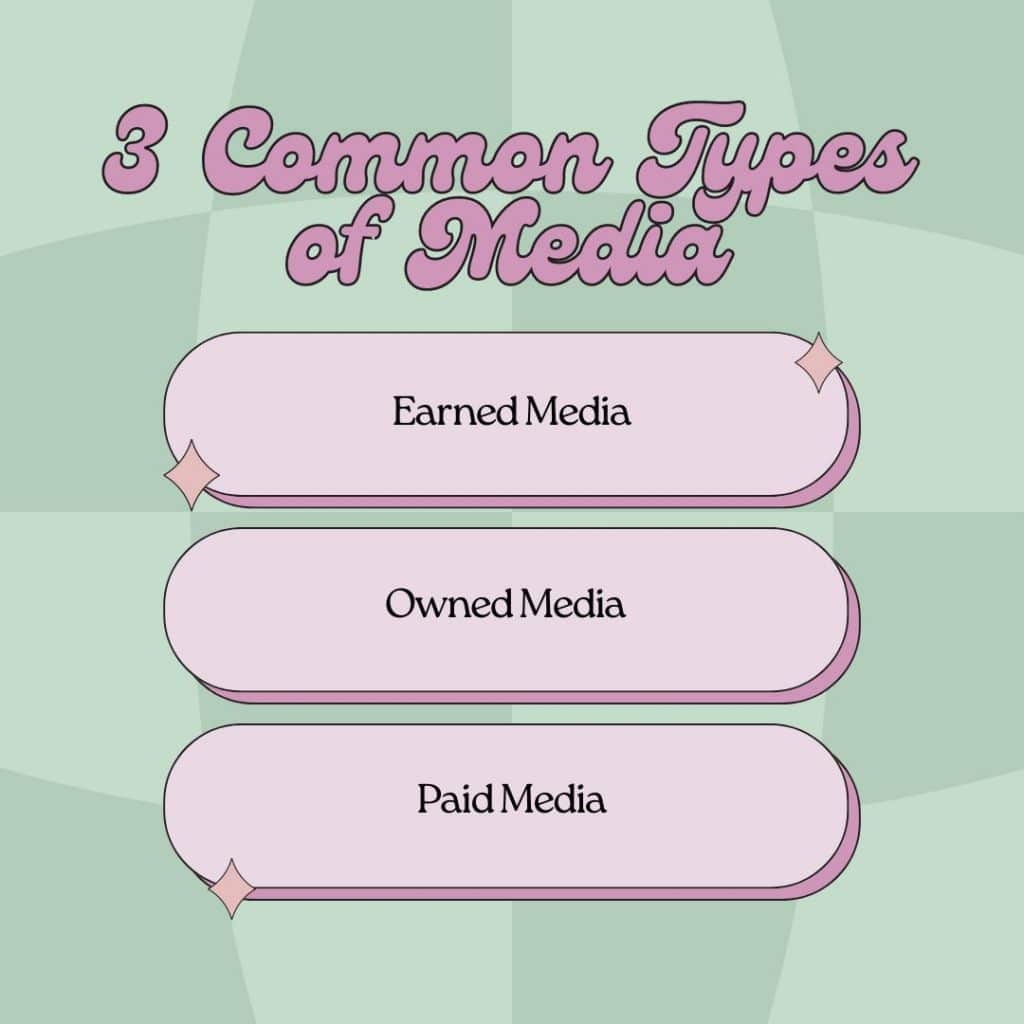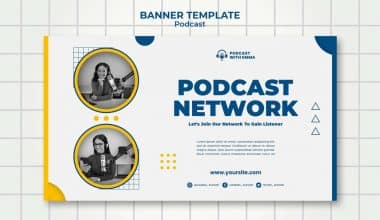It’s safe to say that anyone who owns a business needs to understand the importance of paid media. Paid media has everything to do with lead generation and boosting sales for any business at all, but only if used and managed in the right way. As a business owner, if you manage and run your ads without any solid knowledge or expertise, you might be doing your business more harm than good and you tend to lose more than you earn. To curb this from further happening, because I know you are highly guilty, you will need an expert, hence a good paid media management services.
To start generating revenue while allowing your brand to experience credibility and visibility, you need the presence of a paid media management specialist in your business. They will help you generate the exact ad your brand needs. Before we go deep into paid media management, let’s look at its basics.
What is Paid Media Management?
Based on my thorough understanding and in-depth knowledge of this term, I would say that paid media management is the sole means of managing ads, campaigns, and their likes with the intent of driving leads, growth, and online visibility for a business. Once those ads are created, it is also necessary that you keep tabs on them by monitoring them over time, having detailed reports, and optimizing the ads for better results in the future.
It’s quite important to note that while paid media is fully controlled by an advertiser, which further gives room for precise targeting, tracking, and measurement of return on investment (ROI), it’s quite different for earned or owned media. Having said this, let me quickly juggle your memory on the types of media in practice.
Key Points
- Understand the difference between earned, owned, and paid media.
- Set clear goals and choose the right platforms for your paid media campaigns.
- Diversify your media mix and allocate a budget that aligns with your marketing objectives.
- Continuously monitor, test, and optimize your campaigns to improve performance.
The Difference Between Earned, Owned, and Paid Media
Media itself comes in various forms, and the ability to defer from each of them will help you understand and create an effective media strategy. These media types are all built or created to offer different benefits that completely differ from each other, hence, serving specific purposes in a marketing plan.

#1. Earned Media
Just as its name implies, earned media literally has to be earned. Rather than practicing paid advertising, this type of media requires promotional efforts. These can be done through word of mouth, media coverage, customer reviews, social media mentions, and any content at all that is shared in public by a third party.
Earned media is usually said to be the result of brand reputation and public relations efforts, representing the credibility and trust that the supposed brand has built. The success of this type of media solely depends on the organic exposure created by either your audience or another third party.
#2. Owned Media
Owned media is another type of media widely used by some brands. It is basically a communication platform owned and controlled by a company. Owned media can be seen on the company’s website, social media profiles, blogs, email newsletters, and other direct communication channels. This type of media is a strong component of brand building and content marketing, hence helping brands establish a consistent voice, share correct information, and form strong bonds with their audience.
#3. Paid Media
Coming to the main course of this guide, paid media is about spending some cash to purchase exposure for either your products, your brand, or both. This is probably the fastest and most effective way to get access to a large audience. This is often done with specific targeting options solely based on demographics, interests, behaviors, and lots more.
This type of media also comes in many forms, which include online ads, (like Google AdWords and Facebook ads), sponsored posts, television and radio ads, and print advertising. One advantage one can notice when using this type of media is its ability to achieve immediate visibility and drive leads into becoming potential customers.
How to Manage Your Paid Media
I will tell you for free that the success of paid media has a lot to do with management. When you create a paid media strategy, either by yourself or with the help of a team, you need to back it up with some badass moves for it to hit an all-round jackpot. You can try amplifying your owned media content and encouraging more earned media.
Here are some extra pointers that I curated to help you start off on the right foot.
#1. Have a Clear Goal
No matter the type of plans and strategies you have stipulated for your business, if you don’t have a mapped-out goal, you are done. I don’t know how long I will keep emphasizing this, but having a goal means having a map, and only a map can get you to your destination without much hassle.
What is the primary purpose of your paid media? Have you set up SMART goals that can help you attain them? Are they specific, measurable, attainable, relevant, and time-based? All these questions need to be checked. Then you can now proceed with setting some metrics to be tracked in real time. It can be cost per click (CPC), click-through rate (CTR), revenue, ROI, conversion rate, customer acquisition cost (CAC), and the rest.
#2. Invest in the Appropriate Channel
When having a goal is out of the way, choosing the best channel for your paid media is the next big thing. You need thorough research on your target audience to know where and how they spend their time. Each of these social media platforms—Google, Facebook, LinkedIn, or another—has its strengths and caters to different demographics and interests. Knowing the particular platform on which your target audience are usually present will help you target them more using your paid media.
Knowing this much information about your audience will also keep you at peace, knowing that your contents will function effectively because you are targeting the right audience. With time, you will notice some positive results and if you don’t, you can try adjusting your strategies and also using more platforms. lets analyse these social media platforms:
Facebook Ads

When it comes to Facebook ads, you, as an advertiser, are free to purchase carousel ads to enable you to show off multiple products or services you render. Ads are normally placed on Facebook Marketplace, the right sidebar, and in Facebook Messenger. There is also an option for you to publish a video suggested by Facebook itself. This platform also allows you to set specific goals, target audience and where you want to place your ads. Using this platform, I assure you that you can be working on your budget, they allow you do that.
Instagram Ads
The Instagram platform is another channel where your ads can be placed. You don’t need to follow any complex route; just place either your carousel, picture, or video, and sit back for the magic.
Twitter Ads

I have heard many complaints about the complexity of Twitter in the past, but I will break it down here. Firstly, you have the luxury of choosing from numerous ad options based on your goals. Once a selection has been made, set your objectives and specific target audience, then go ahead and select the tweet you want to promote. The sweet part is that your sponsored tweets looks like regular tweets, so nothing will hinder its progress.
LinkedIn Ads

While maintaining the professionalism of LinkedIn, you can create good ad content that will bring worthy outcomes in the long run. Aside from the normal ads that appear in the user’s feed, there is another type of paid media or ad known as “Sponsored InMail”. This type of ads delivers your content directly to the direct message (DM) of your target audience.
Youtube Ads
Paid media on YouTube can only be successful in these formats:
- Short, 6-second bumper ads
- TrueView in-stream ads (skippable)
- TrueView for action ads (video with a CTA)
- Google Preferred ads (non-skippable)
Tiktok Ads
I will tell you for free that TikTok kind of offers quite pricey ads, which are made available in every country. It’s never a bad idea to give a try. Their ads also come in the form of in-feed, pre-roll ads, promoted hashtag challenges, and custom filters.
PPC Ads
Pay-per-click is another channel through which your paid media can be promoted. Just like the name implies, it charges you every time someone clicks on your ad. If your industry is competitive, this can be the deal for you.
#3. Diversify Your Media Mix

When placing ads, putting your eggs in one basket is the wrong move. I listed multiple platforms above, you are free to try them sparingly. Doing this can help you diversify your content and reach a larger audience. Don’t limit yourself when you can go wild.
#4. Decide on a Budget
I mentioned Facebook as one of the platforms that can help you work on a stipulated budget. You can’t allow your business go bankrupt because you need to run ads. You determine how much you are willing to spend on your ads before even placing an ad. This will help you stay in check and avoid unnecessary spending.
#5. Monitor and Adjust in Real Time
Measure, measure, and keep measuring in real time, get an expert if you may. This is the only way to track your progress and make adjustments if need be. Once you have an ad placed, you need to keep reviewing, make this a habit. Note where you got it right, the mistakes you made and how you will do better.
#6. Test and Optimize Continuously
Testing on this part means that you need to put into testing different aspects of your paid media campaigns, which include call-to-action phrases, images, copy ads, and others. This testing phase will help determine which campaigns resonate better with your audience. Also, ensure that all your paid media efforts are in alignment with your overall marketing strategy and brand messaging.
#7. Customer Experience
Anything that can make your audience or customer glued to your media, please do it. Their experience is your priority, so you need to make it worth it when creating and designing your campaigns. Your ads should be extremely attractive compared to your normal media. This way, you can easily convert.
This free checklist will be handy if you need to keep things in check:
Paid Media Management.pdf
Paid Media Channels

Let’s look at some paid media channels that are widely used by businesses:
#1. Paid Social Media
If you have read this blog to this point, you will notice that I made mention of these social media platforms where your media can go. Platforms like Facebook, Instagram, Twitter, LinkedIn, and TikTok are known for offering that type of service.
#2. Search Engine Ads
Search engine ads can be found in Google’s type of ad. This search engine ads allow businesses to place ads in search engine results based on specific keywords. This type of ad tends to be noticed when customers are constantly searching for the particular product your business is known for.
#3. Banner Ads
Banner ads is a form of display advertising and are normally seen on websites. It functions by using information gotten from user demographics, interests, or some websites that the target audience is likely to visit.
#4. Native Ads
Native advertising uses ads that are designed to match the appearance, feel, and function of the media format they appear in. Because they are less disruptive and blend in with the website’s content, they can lead to higher engagement rates.

#5. OOH and DOOH
Out-of-Home (OOH) advertising and Digital Out-of-home (DOOH) encompasses traditional billboards, bus stops, other physical ad placements, and digital billboards and screens, respectively.
#6. Influencer Marketing
This ad channel is almost been practiced by all. As a business owner, you must have partnered with a popular influencer with vast followers to help promote your business and the services you offer.
Examples of Paid Media Management
After the detailed guide above on how to go about paid media and its management, let’s look at some practical examples to help you understand it better:
Example #1: Paid Social Media Campaign
A clothing brand initiates a precision-targeted social media advertising effort on Facebook to highlight its latest summer apparel collection. Leveraging Facebook’s sophisticated targeting features, the brand can connect with a specific audience: individuals interested in summer fashion, residing in warmer regions, and frequent online shoppers. The advertisements feature eye-catching visuals of the new clothing line, paired with compelling calls-to-action that prompt users to explore and purchase the collection online.
Example #2: Search Engine Ads for Lead Generation
A B2B software firm employs Google Ads to generate leads for its project management software. The company targets relevant keywords that prospective customers are likely to use while searching for project management solutions, such as ‘top project management software’ or ‘team project management tools.’ These ads guide users to a dedicated landing page where they can sign up for a free trial of the software, accompanied by a form to collect lead details.
Example #3: Native Advertising for Content Promotion
An online health and wellness magazine leverages native advertising to highlight its articles on healthy eating habits. The ads are strategically placed on relevant content platforms and crafted to seamlessly integrate with the surrounding articles, making them more appealing and less intrusive for readers. This strategy effectively drives traffic to the magazine’s website, boosting both readership and subscription rates.
Conclusion
If, at this stage, you are still stuck, or maybe not yet ready to carry out these functions as a business owner, not to worry, Lamphills is a place to be. We can effectively help you manage your social media and all the advertising services your business might need. Just reach out so we can start on something. And even if you can kick start on your own, then I’m rooting for you.
Related Articles
- 11 Google Alerts Alternatives You Should Try Now (Free & Paid)
- 7 Must-Try Paid Media Services for Businesses
- How to Get Media Coverage for Your Business & Event
- MEDIA ANALYSIS: How To Conduct An Effective Media Analysis
- Social Media Engagement: 7 Interactive Post Ideas That Helped Us.






